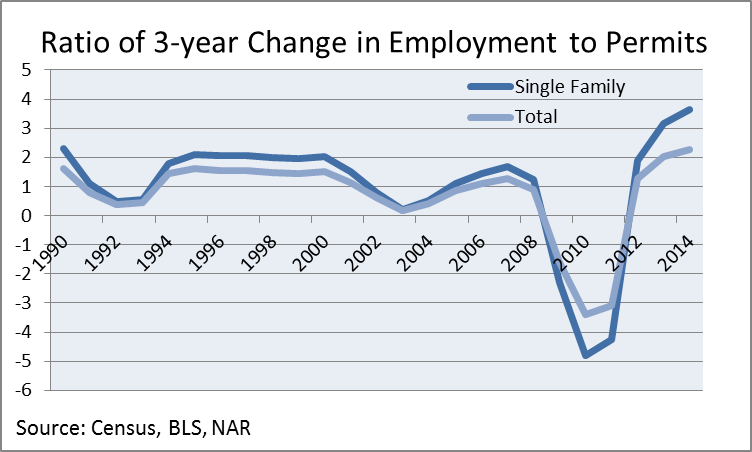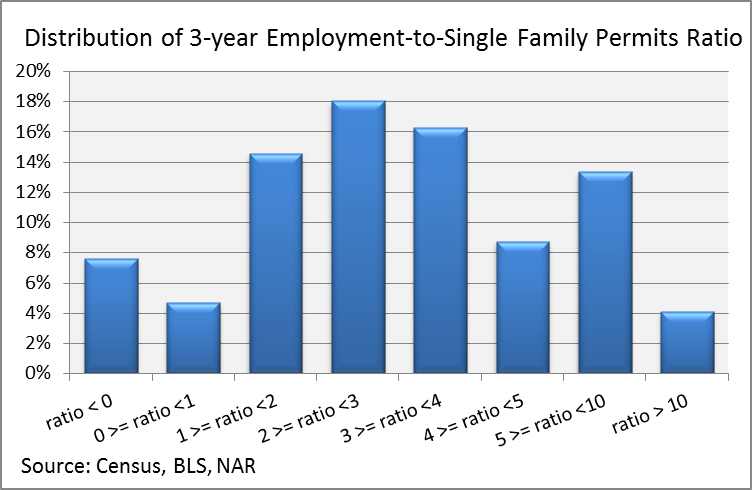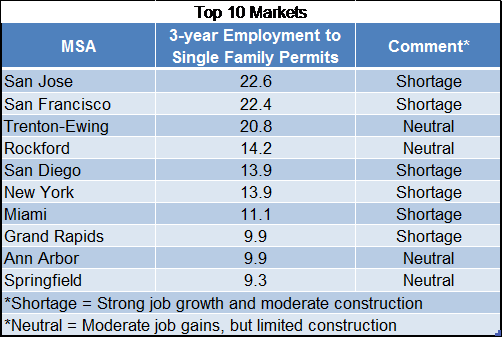By Ken Fears, Director of Housing Finance and Regional Economics, and LaShawn Skeete, Research Intern
Summary:
- Supply constraints persist
- Construction has not kept pace with long-term demand
- Prices are likely to continue to rise in markets with inadequate supply in relation to job creation
After a rocky start to 2014, home sales finished the year strong and have been averaging above 5.3 million units at an annualized pace since March of this year. Sales notched 5.49 million in July and are forecast to total 5.3 million for 2015 before rising to 5.5 million in 2016. While sales have boomed, the months supply of homes for sale has remained grudgingly below a neutral 6 to 7 range since August of 2012. As a result, prices continue to rise at an above trend pace and entry-level buyers are having trouble finding available properties.
Typically there are two drivers of supply: trade-up or trade-down buyers selling their property and new construction. In recent years, short sales and foreclosures have also created a channel for inventory, but steady price appreciation and a strengthening economy has reduced the share of distressed sales to a fifth of their peak and closer to historic norms. While slow employment growth, student debt, and tight credit have hampered entry level construction in recent years, millennial employment has improved along with their confidence according to the Federal Reserve.
One means of measuring the sufficiency of supply is to look at the volume of new construction relative to the number of newly employed workers. Historically, the US averaged 1.2 for the annual change in total workers to total permits. For single family permits this ratio was 1.6. Since 2011, both ratios have been above their historic averages. In 2014, the ratio of single family permits to employment jumped to 3.7, while the ratio for total permits increased 50% to 2.4.

To remove annual volatility, one can look at the same ratio over a 3-year horizon through 2014. As depicted above, the 3-year change in employment to permits is historically high for both single family (3.7) and total permits (2.3). At the metro level this imbalance can be even more extreme. 37% of the metro areas for which NAR tracks median home prices had a single-family ratio equal to or greater than the national average of 3.7, while 17% had a ratio greater than 5.0.

The markets with the largest ratio are widespread. While three of the markets are in California and have averaged annual employment growth of 3.6% between 2012 and 2014, the rest are spread across the Midwest, New York, and Miami and averaged a more modest 1.9%. This pattern suggests that limited construction is a widespread issue. At the opposite end of the spectrum, the ratio was negative for 13 of the markets tracked including Decatur, Danville, Binghamton, and Shreveport, all markets where total employment fell between 2012 and 2014.

Looking forward, the high employment-to-permits ratios in 2014 combined with steady employment gains in the first half of 2015 and improved, but muted gains in permits suggest sustained price growth. A decline in negative equity or improved credit access could drive nascent supply from trade-up or trade-down buyers that could ameliorate price growth, but the net impact is more likely a zero sum change. In the long-term, more supply is needed.








